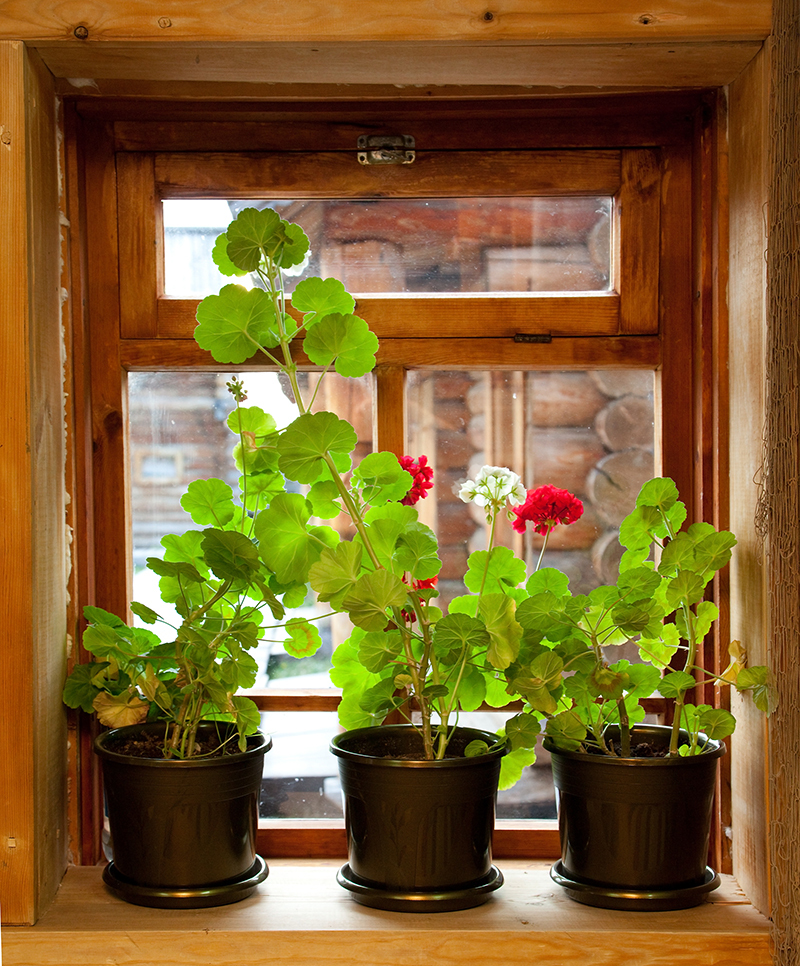Hydrangea Care Simplified: Practical Tips for Gardeners
Posted on 24/08/2025
Hydrangea Care Simplified: Practical Tips for Gardeners
Hydrangeas are among the most beloved flowering shrubs found in gardens across the globe. With their large, showy blooms and lush foliage, they add remarkable beauty and texture to any landscape. However, caring for hydrangeas can be tricky if you're not familiar with their unique requirements. In this comprehensive guide, you'll discover easy, actionable hydrangea care tips that will help you grow healthy plants and enjoy abundant blooms season after season.
Understanding Hydrangeas: Types & Growth Habits
Before diving into the details of hydrangea maintenance, it's crucial to recognize the different types of hydrangeas. Each variety has its own preferences and care requirements. Here are the most popular types gardeners encounter:
- Bigleaf Hydrangea (Hydrangea macrophylla): Known for their mophead or lacecap blooms and ability to change flower color based on soil pH.
- Panicle Hydrangea (Hydrangea paniculata): Features cone-shaped flower heads, often white to pink, and is hardier than most.
- Oakleaf Hydrangea (Hydrangea quercifolia): Boasts unique oak-shaped leaves and pyramidal flower clusters.
- Smooth Hydrangea (Hydrangea arborescens): Noted for their large, white globe blooms, with 'Annabelle' being a classic variety.
- Climbing Hydrangea (Hydrangea anomala subsp. petiolaris): A vigorous climber, ideal for walls, fences, or large trellises.
Understanding which type of hydrangea you've planted is the foundation of effective hydrangea care. Each species has varying needs regarding sunlight, pruning, and winter hardiness.

The Best Location: Planting Hydrangeas for Optimal Growth
Choosing the Right Spot
Location is everything when you want to simplify hydrangea care. Here are some tips to ensure your hydrangeas start out strong:
- Sunlight: Most hydrangeas thrive in morning sun and afternoon shade. Panicle hydrangeas tolerate more sun, while bigleaf and oakleaf types appreciate protection from harsh midday rays.
- Soil Type: Hydrangeas prefer rich, well-drained, loamy soil. They dislike soggy conditions, so amend heavy clay or sand with compost to improve water retention and drainage.
- Space: Give your hydrangeas room to grow. Crowding can encourage disease and reduce air flow. Proper spacing lets the plant mature into its natural shape.
Transplanting Tips
If you need to move your hydrangea or are transplanting from a container:
- Transplant in early spring or fall for minimal stress.
- Dig a hole twice as wide as the root ball but no deeper.
- Water thoroughly after planting and mulch to conserve moisture.
Hydrangea Watering Guide: How Much and How Often?
Watering your hydrangeas correctly is one of the most important aspects of successful hydrangea care and encourages abundant, healthy blooms.
- Consistency is Key: Hydrangeas need evenly moist soil, especially during dry periods in summer. A deep soak 1-2 times per week is preferable to light, daily watering.
- Water Early: Water in the morning to reduce the risk of fungus and allow leaves to dry.
- Mulch: Apply 2-3 inches of organic mulch (such as pine bark or straw) around the base to help retain moisture and suppress weeds.
- Container Hydrangeas: Potted plants dry out faster. Check soil regularly and ensure good drainage to avoid root rot.
Feeding Your Hydrangeas: Fertilizer Basics
Nourishing your hydrangea shrubs keeps them vigorous and promotes stunning blossoms. Here's how to optimize feeding:
- When to Fertilize: Feed in early spring as new growth emerges and again in early summer if needed. Avoid fertilizing late in the season, which promotes tender growth vulnerable to frost.
- What to Use: Use a balanced, slow-release fertilizer (such as 10-10-10) or one specifically formulated for blooms. Organic options like composted manure or fish emulsion are effective too.
- Avoid Overfeeding: Excess fertilizer, especially nitrogen, leads to lush leaves but fewer flowers.
Special Note on Soil pH and Bloom Color
For bigleaf hydrangeas, flower color is affected by soil pH:
- Acidic soil (pH < 6): Blooms turn blue or lavender.
- Alkaline soil (pH > 7): Flowers become pink or red.
To change hydrangea bloom colors, adjust the soil with aluminum sulfate for blue or garden lime for pink, applying in early spring for the best effect. Always test your soil pH before amending!
How to Prune Hydrangeas: Timing and Technique
Many gardeners are unsure when and how to prune hydrangeas. The right timing depends on your hydrangea type:
-
Bigleaf & Oakleaf Hydrangeas:
- Bloom on old wood (last year's stems).
- Prune immediately after flowering in summer.
-
Panicle & Smooth Hydrangeas:
- Bloom on new wood (stems formed in the current year).
- Prune in late winter or very early spring before new growth starts.
-
Climbing Hydrangeas:
- Rarely need pruning; trim to control size after flowering.
When pruning, always remove dead or weak stems to open up the plant and encourage airflow. Use clean, sharp tools for the healthiest cuts.
Common Hydrangea Problems and How to Fix Them
Dealing With Pests and Diseases
Even the best hydrangea care practices can't always prevent every problem. Here's what to watch for:
- Aphids & Spider Mites: Spray with strong jets of water or use insecticidal soap.
- Powdery Mildew: Provide good air circulation and avoid wetting leaves when watering. Remove and dispose of affected foliage.
- Leaf Spots & Rust: Prune to improve airflow and remove infected leaves; apply a fungicide if needed.
- Root Rot: Ensure well-draining soil and avoid overwatering.
Regularly inspect plants for signs of trouble, and act early to keep your hydrangeas healthy.
Overwintering Hydrangeas for Repeat Blooms
Winter hydrangea protection is vital, especially for bigleaf and oakleaf varieties in colder climates. Here's how to safeguard your plants:
- Mulch heavily around the base with leaves or straw to insulate roots.
- Wrap plants with burlap if located in a windy, exposed area.
- Delay pruning until spring to protect dormant flower buds from frost damage.
Increasing Blooms: Pro Tips for Flowers Galore
Want more hydrangea flowers? Here's how to maximize your blooms:
- Plant in the right spot--good light, soil, and moisture ensure healthy growth.
- Use a phosphorus-rich fertilizer (like bone meal) if blooms are scarce.
- Deadhead spent flowers (unless you want the winter interest of dried seed heads).
- Avoid cutting back old wood on varieties that bloom on previous season's growth.
Creative Hydrangea Uses in the Garden
Landscape Tips
- Create an eye-catching hedge or privacy screen with panicle or smooth hydrangeas.
- Mix hydrangeas with shade-loving hostas, ferns, and astilbes for a lush woodland border.
- Train a climbing hydrangea up a pergola or wall for beautiful vertical interest.
- Container hydrangeas are perfect for patios and small spaces--choose dwarf varieties for best results.

Frequently Asked Questions: Hydrangea Care Simplified
- How often should I fertilize my hydrangea? Once in early spring, optionally again in early summer.
- Why aren't my hydrangeas blooming? Common reasons include incorrect pruning, not enough sun, or late-spring frost damage to flower buds.
- Can I change the color of all hydrangea types? Only bigleaf hydrangeas (Hydrangea macrophylla) and some hybrids respond to pH adjustments.
- Are hydrangeas drought tolerant? Generally, no--they prefer consistently moist (but not soggy) soil.
- Should I deadhead hydrangeas? Deadheading encourages new blooms and keeps plants tidy, but leave the last blooms for winter interest if you prefer.
Final Thoughts: Hydrangea Care Made Simple
With these practical hydrangea care tips, anyone can grow vibrant, healthy shrubs that reward you with lush foliage and stunning blossoms. Remember, the key to thriving hydrangeas is understanding your plant's type, providing the proper site conditions, and following thoughtful watering, feeding, and pruning routines. With patience and attentive care, your hydrangea garden will flourish year after year.
Are you ready to enhance your garden with beautiful hydrangeas? Implement these care strategies, and savor the spectacular blooms that follow. If you have more questions or want to share your hydrangea success stories, leave a comment below or reach out to your local garden center for more advice!
Latest Posts
Hydrangea Care Simplified: Practical Tips for Gardeners
Does Your Character Align with a Daisy, Rose, or Tulip
Orchid Enthusiast's Detailed Care Handbook





